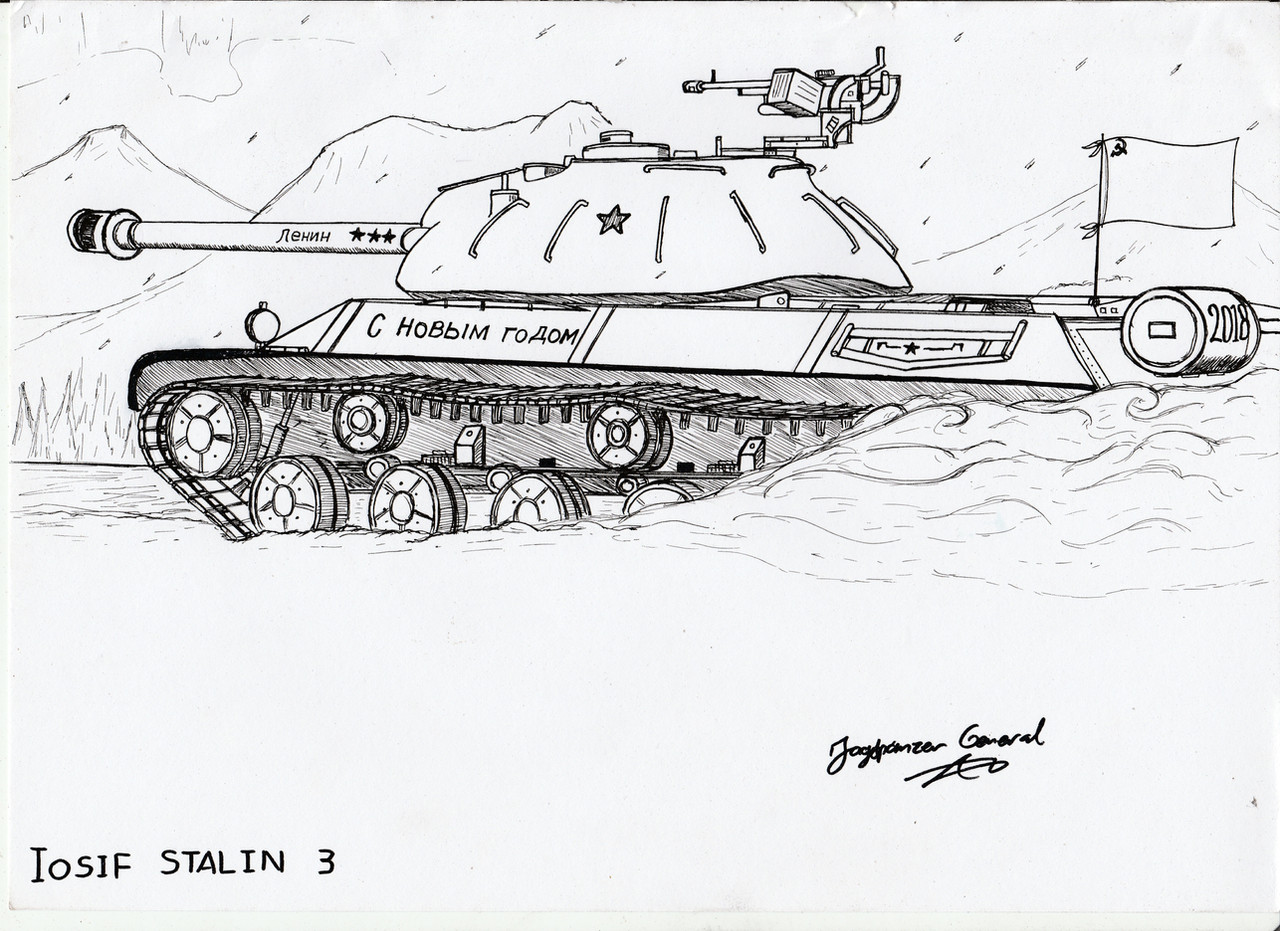HOME | DD
 StubbornEmil — Joseph Stalin 3 Heavy Tank
StubbornEmil — Joseph Stalin 3 Heavy Tank

#military #newyeareve #russiantank #soviettank #tank #weapon #militaryvehicle #caterpillartracks #heavytank #snowylandscape #snowymountains #snowclouds #2018newyear
Published: 2017-12-30 09:27:18 +0000 UTC; Views: 3726; Favourites: 58; Downloads: 16
Redirect to original
Description
Designed in 1944, with 29 vehicles produced by the end of WWII and 2,282 by mid-1946.The Iosef Stalin 3, also known as the Joseph Stalin 3 had improved armor layout, and a hemispherical cast turret (resembling an overturned "soup bowl") which became the hallmark of post-war Soviet tanks. While this low, hemispherical turret may have made the IS-3 better protected, it also imposed severe penalties inside the tank by significantly diminishing the working headroom, especially for the loader (Soviet tanks in general are characterized by uncomfortably small interior space compared to Western tanks). The low turret also limited the maximum depression of the main gun, since the gun breech had little room inside the turret to pivot on its vertical axis. As a result, the IS-3 was less able to take advantage of hull-down positions as Western tanks. The IS-3's pointed prow earned it the nickname Shchuka (Pike) by its crews. It weighed slightly less than the IS-2 and stood 30 cm lower.
The 122mm A19 main gun was an established field gun as a towed howitzer and not only offering a capable armour piercing capacity at short ranges, it offered a superior bunker bashing capability thanks to the High Explosive rounds it fired. The 122m A19 had been around since the 1930’s and had an established manufacturing infrastructure behind it, which also supported the decision to adopt it as the main gun. Also known as the D25-T, it used Separate Loading ammunition, which limited the amount of shells carried to 28. The HE round or Armour piercing round was loaded in to the breach and then the combustible charge was loaded after, at which point the breach was closed and the gun fired. Two 7.62mm and one 12.7mm MG’s were used as secondary armaments.
The D25-T had an unfortunate tendency to explode, and its gun tube had a relatively short life. During trials on the A19's muzzle brake, the tube exploded, seriously injuring Marshall Kliment Voroshilov in the process; this led to protests against further development of the A-19, but Joseph Stalin intervened and insisted the A-19 be fielded regardless. The 122/40 D25-T also had a short tube life; approximately 200 rounds could be fired out of the main gun before the gun barrel wore out.
Despite these problems, the IS-3's main gun possessed an impressive amount of firepower. The D25-T could throw a 122mm APBC round 2000m and potentially penetrate up to 129mm of RHA steel. At 500m, the A-19's BR-471B APBC could penetrate up to 157mm.
The IS-3 came too late to see action in World War II. Though some older sources claim that the tank saw action at the end of the war in Europe, there are no official reports to confirm this. It is now generally accepted that the tank saw no action against the Germans, although one regiment may have been deployed against the Japanese in Manchuria.
In post-war conflicts, the IS-3 saw combat with the Soviet Army during the 1956 invasion of Hungary, and the Prague Spring in 1968.
Starting in 1960, the IS-3 was slightly modernized as the IS-3M, in a manner similar to the IS-2M. The Egyptian Army acquired about 100 IS-3M tanks in all from the Soviet Union. During the Six Day War, a single regiment of IS-3M tanks was stationed with the 7th Infantry Division at Rafah; the 125th Tank Brigade of the 6th Mechanized Division at Kuntilla was also equipped with about 60 IS-3M tanks.
Israeli infantry and paratrooper units had considerable difficulty with the IS-3M when it was encountered due to its thick armour, which shrugged off hits from normal infantry anti-tank weapons such as the Bazooka. Even the 90 mm AP shell fired by the main gun of the Israeli Defense Force (IDF) M48 Patton tanks could not penetrate the frontal armour of the IS-3s at normal battle ranges. However, due to the IS-3's much thinner flank armor, Israeli Patton and Centurion Tanks had little trouble penetrating the sides of the IS-3 tanks. Captured tanks were subsequently used by the Israeli army as static artillery pieces.Last Drawing of the year, Last piece of paper from my current sketch book.
Happy New Year 2018!







Related content
Comments: 2

alas, the champion throne of the tier VIII strongholds. Master of many, Dominated by none! I remember how happy i was the first time i got this thing. XD we used them in force and hardly lost a game!
👍: 0 ⏩: 0


























